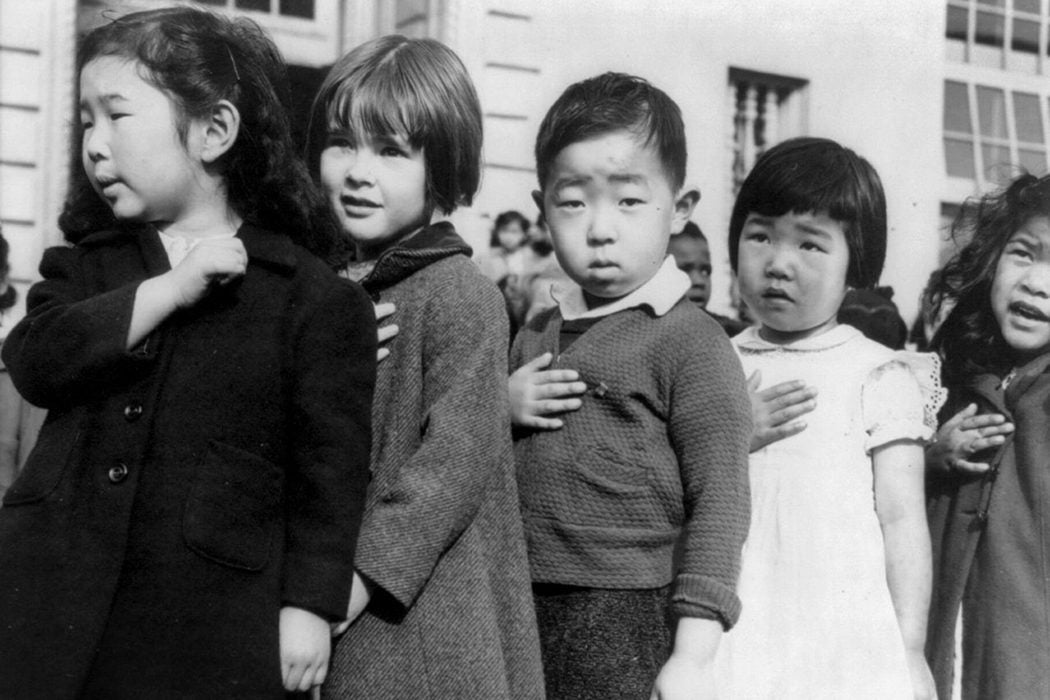Trump ally Carl Higbie recently cited Japanese internment camps during World War II as a “precedent” for a proposed registry of Muslims in the U.S. The attitude toward Japanese-Americans in 1942, when the government interned more than 100,000 men, women, and children in camps around the country, has obvious parallels today. Government authorities saw an entire ethnic group as a potential national security threat because of its supposed ties to a hostile power abroad.
A 2007 paper by Hui Wu reveals unintended consequences of targeting a group based on ethnicity that may also have parallels today. Wu examines these issues through the lens of papers written by interned high school students at a camp in Arkansas.
Wu describes a bleak environment in the camps in Arkansas, located in swampland surrounded by barbed wire and watchtowers manned by armed guards. Prisoners were forbidden radios or any other source of information about the outside world. Overcrowded living quarters forced families to share one-room apartments with strangers. Food was insufficient, and stagnant water bred mosquitos, which spread disease.
In this environment, the War Relocation Authority (WRA) assigned teachers the task of giving their students “an understanding of American ideals” and promoting “loyalty to American institutions.”
One government fear that helped launch internment was the notion that Japanese-Americans were self-segregating in “Little Tokyos,” creating a potential national security threat. But the students’ autobiographical essays showed that most of the teenagers had been born in California and gone to school with many white classmates. Wu writes that “for many students, segregation in the internment camp was their first encounter with ‘little Tokyos.’”
One theme the WRA emphasized in its curriculum guidelines was the pioneering American spirit of relocation, leading to the intermingling of people from different backgrounds. But, looking at the essays, Wu found the students interpreted these issues differently than the WRA might have hoped.
In response to a prompt about relocation, one student described the first generation of Japanese-Americans who, “without the least knowledge of the English language nor the new surroundings, came to this land with the American pioneering spirit of resettling.” They worked hard and withstood hardships, the student wrote, “only to be resettled by the order of evacuation.”
Weekly Newsletter
Students also expressed skepticism about the WRA’s insistence that, once indoctrinated with the American can-do spirit, they’d be able to leave the camps and smoothly integrate back into a white-dominated society. One wrote that many Americans “are inclined to take the view in the newspapers, magazines, and journals, which have great influence on the creation of public opinion and some people may look upon us with suspicion, fear, and hate.” Another added, “I don’t see why, if the people still take that attitude, we should resettle outside.”
Of course, after the camp closed in 1944, most of their prisoners did find new places in U.S. society, even in the face of racist hostility. But, as we can see from formerly interned Japanese-Americans who are now speaking out against the registration of Muslims, the experience was something they wouldn’t easily forget.







